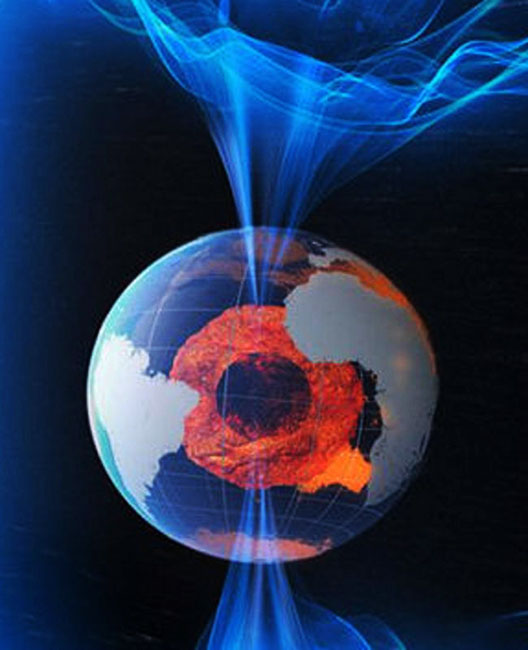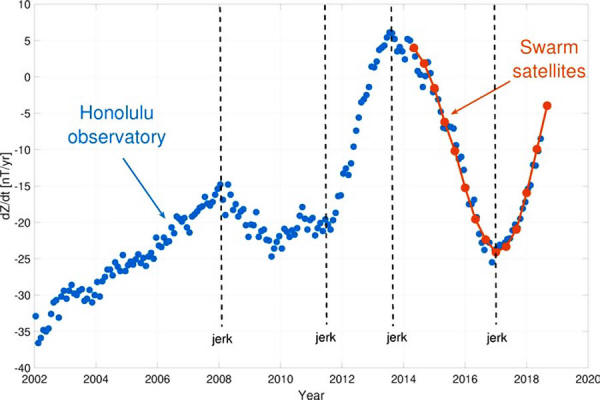|
by Dr. Tony Phillips
from SpaceWeatherArchive Website
The north pole itself has been wandering across the Arctic for centuries. Currently, it is racing from northern Canada toward Siberia on an unpredictable path that has prompted hurried updates to world magnetic models.
And then there are the "geomagnetic jerks."
Every 3 to 12 years,
Earth's magnetic field suddenly accelerates in one direction or
another, a phenomenon that has puzzled scientists since it was
recognized in the late 1970s.
at the Honolulu observatory (blue) and in Earth's orbit (red). Sudden changes in the slope indicate geomagnetic jerks.
[More]
There is evidence for jerks going all the way back to 1901. Some are global, felt everywhere, while others are regional, spanning single continents or less.
The unpredictability of
jerks has complicated efforts to forecast geomagnetism.
In a paper (Geomagnetic Jerks and Rapid Hydromagnetic Waves focusing at Earth's Core Surface) published on April 22nd in Nature Geoscience, Julien Aubert (Paris Institute of Earth Physics) and Christopher C. Finlay (Technical University of Denmark), describe how they created a computer model for geomagnetic jerks based on the physics of hydrodynamic waves in Earth's molten core.
According to their model, jerks originate in rising blobs of metal that form deep inside our planet.
These slow-moving blobs can take 25 years to rise to the top of the convection zone. As they buoy upwards, the blobs disrupt the normal flow of magnetic field-generating currents and, in turn, cause jerks.
The model successfully
reproduces the form and timing of recent events.
Globally, Earth's magnetic field has weakened by more than 10% since the 19th century with an even faster decline in the 2000s. Satellite data show the changes are uneven.
According to CHAMP, Ørsted, and SWARM, the field has recently weakened by about 3.5% at high latitudes over North America, while it has strengthened about 2% over Asia.
The region where the field is at its weakest - the South Atlantic Anomaly - has moved steadily westward and weakened further by about 2%. At present, no one can predict these changes.
However, Aubert and
Finley's successful model of jerks suggests that a deeper
understanding may be within reach.
The name "jerk" was borrowed from dynamics, where it means,
Geomagnetic jerks are therefore
the first derivative of magnetic acceleration.
|



